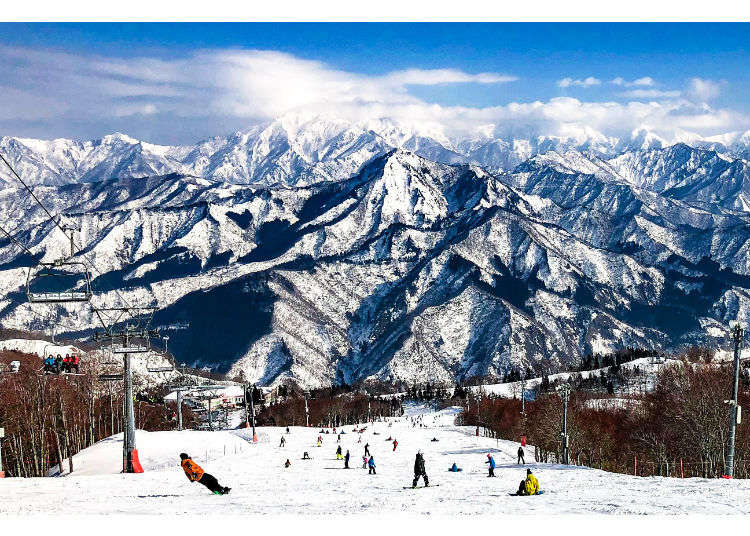
Skiing & Snowboarding in Japan: Best Ski Resorts in Japan & When to Go
- Written by: Andy Cheng
While Japan is known for its neon-lit cities, historic shrines, and delicious food, it is also filled with fantastic ski resorts that draw in many winter sports lovers from around the world. From back-country skiing to around 500 ski resorts, there is a place to ski or snowboard for any skill level.
Why Japan is a great ski/snowboard destination

Japan is known for its unparalleled quality and quantity of powder snow. The cold and dry winds that form in Siberia absorb moisture over the Sea of Japan. They then release this in the form of snow over parts of Japan. The resulting snow is light and powdery and gets all the skiers and snowboarders excited worldwide.
So why is powder snow so great, you might ask? Well, the lighter the snow, the easier it is on your legs, so you can ride all day long! It feels as if you are floating along the clouds! The sheer quantity of snow also means that there are ski resorts all the way from the northern prefecture of Hokkaido to the southern island of Kyushu.
Combined with the delicious food, relaxing hot springs, and spectacular scenery, it makes Japan one of the most exciting places to visit for ski and snowboarders.
When is ski season in Japan?
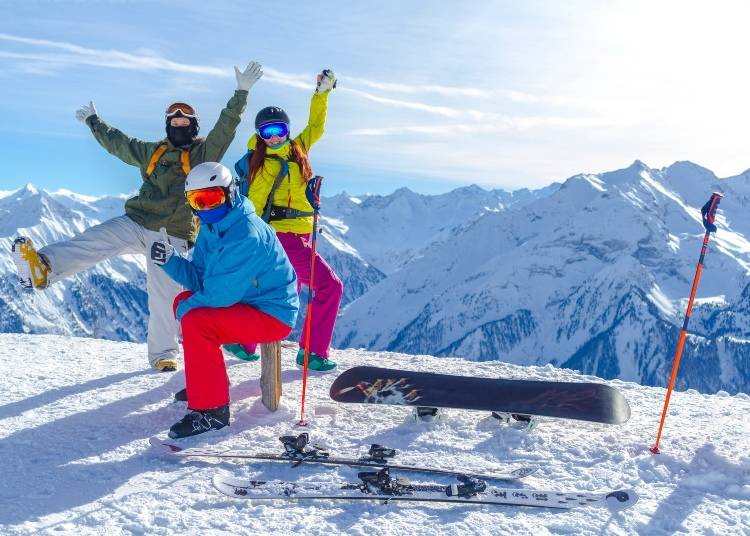
December through February is the most popular period to visit Japan to ski and snowboard. Japan sees its highest snowfall during this time, so you can enjoy the deep powder snow in many parts of the country.
According to the Japan Meteorological Agency, in 2021, Niseko (one of Japan’s most popular ski resort towns) saw 262 cm of snow in December, 249 cm in January, and 247 cm in February. While this is just one example, these months are much the same for the rest of Japan.
During early February, be wary of the Chinese New Year. Many Chinese skiers and snowboarders flock to Japan during the holidays, which often sees higher travel and hotel prices as well as being busier than usual.
Spring skiing is also popular in areas such as Hokkaido, where the prices are lower than in winter, and the slopes see fewer people. You can experience the warmer temperatures and spring sun while enjoying the slopes. Whilst you might not find the deep powder that you might find in winter, it is a fantastic, cheap and different way to enjoy your skiing or snowboarding holiday.
Popular ski destinations in Japan

You can find approximately 500 ski resorts throughout the country. Still, a few areas, in particular, take our spot as the top areas we think you should visit for your winter sports holiday. Remember, these are just a selection of the hundreds of resorts left to explore!
1. Hokkaido

Hokkaido is Japan’s northernmost and largest prefecture and home to some of the finest powder snow in the world. The plethora of mountains and ski resorts makes it one of the top go-to places for all winter sports lovers.
・Best time to ski in Hokkaido
Hokkaido is blessed with heavy snowfall from December to February, so you’ll find deep, powder, cloud-like snow during these months, but it may get a little crowded! March to May sees much lower snowfall but enough to enjoy many of the slopes and the warmer spring weather. However, in this season, you won’t be able to find the famous powder snow and instead, the snow will be a little harder!
Best ski areas in Hokkaido

Niseko
Located approximately two hours from Sapporo by car, Niseko is the go-to place for many skiers and snowboarders across the country and the world. The many ski resorts throughout Niseko, as well as some of the finest powder snow in the world, mean that it is extremely busy every winter season.
Niseko started to develop following the 1972 Winter Olympics in Sapporo, with state-of-the-art ski lifts, gondolas, restaurants and lodges built in the 1980s. However, Niseko really started to boom during the early 2000s and in 2013, won the World Ski Award for Best Ski Resort in Japan for the first time and then in 2014, 2015 and in 2016.
It quickly became popular with people worldwide as they wanted to get a piece of the powder action. Now, many internationals live in Niseko, with the majority being Australian. You can find many ski and snowboard instructors, rental shops and guides to help you with your stay in Niseko, making it one of the most user-friendly ski resorts, no matter your level, in the country.
There are four main ski resorts in Niseko: Annupuri, Hanazono, Hirafu, and Niseko Village. All have easy access to the slopes as well as plenty of luxury hotels, condominiums, and lodges to accommodate your stay. Many people visit Hirafu to enjoy the deep powder snow and the fantastic nightlife filled with bars, restaurants, izakayas and hot springs.
While Annupuri, Hanazono, and Niseko Village ski resorts have similar facilities, they are a little more secluded, making them great for those that want to relax on winter getaways. Mt. Annupuri is a prominent place to enjoy the deep powder snow, which also overlooks the beautiful Mt. Yotei. Just behind Mt. Annupuri is Mt. Iwaonupuri, known for its back-country skiing.
Sapporo
Sapporo is the perfect place to enjoy the hustle and bustle of the city, whilst still being able to quickly get some runs in on the slopes! The capital city has excellent access to and around the key skiing and snowboarding spots.
What is so great about Sapporo is that you can easily access different mountains that offer different experiences, views, and atmospheres! It’s popular for those that like to have a balance between roaming the city life balance with their winter sports activities. You can ski in the morning and afternoon and then enjoy the nightlife in Susukino. You can even relax in the crisp daytime sun in the city and head to the slopes during the evening! Compared to Niseko, you’ll find many more locals on the slopes around Sapporo.
The majority of Sapporo’s key spots are on the south and west side of the city. To the south is Takino Snow World Family Ski Resort, perfect for a day out with your children to enjoy various winter sports activities. There is also Mt. Moiwa Ski Resort (which is only for skiers), which has some fantastic views over Sapporo City. To the west, you have Bankei Ski Area and Teine, which has various courses of varying difficulty as well as some of the best views over the city. Finally, there is Sapporo Kokusai Ski Resort, which is great for intermediate-level skiers as well as people that love free riding and back-country skiing.
Furano
Furano is located just two hours from Sapporo and is one of Hokkaido’s top spots to enjoy the famous powder snow. What’s great about Furano is that it does not feel too much like a resort. There are mountains and terrain for all levels of skiers and snowboarders, with many resorts offering English services. Its central location means that it often sees higher-quality powder snow than areas such as Niseko. The wide range of ski resorts in and around Furano means it’s a great hub to access the slopes.
Furano Ski Resort is the most popular resort in the area, which has a great balance of winter sports and Hokkaido life. While the slopes see over 9m a season on average, Furano town also has some beautiful scenery, fantastic food and small locally run businesses to explore. With 10 lifts and 23 courses, it is one of Japan’s larger ski resorts. The wide and long groomed runs are perfect for beginners and also for the more advanced to show off their moves. Back-country skiing is also popular, where you can enjoy knee-to-waist-deep snow! Just a little up north, you can enjoy the quaint Nakafurano Hokusei Ski Area, with beautiful views looking over the town and Tochidake mountain range.
Recommended snow activities in Hokkaido
2. Nagano

Located northwest of Tokyo, just a two-hour shinkansen ride away, Nagano is famously known for its stunning scenery and beautiful mountain ranges. It’s no wonder some of the best ski resorts can be found here!
・Best time to ski in Nagano
The best time to visit Nagano for skiing or snowboarding is between mid to late December to February. You can even enjoy some spring skiing from March to early May!
Best ski areas in Nagano

Hakuba
Alongside Niseko, Hakuba is one of Japan’s top winter sports destinations. Only one hour away from central Nagano City, the “Hakuba Valley” (a collection of 10 ski resorts) area runs north to south between the foothills of the Hida Mountains. People from across the world flock to Hakuba to get a piece of the action, enjoying the fantastic scenery, hot springs, fine food, luxury accommodation, and of course, the slopes.
The most famous resort is the Hakuba Happo-One, which gained popularity after hosting several events outing the 1998 Winter Olympics. The largest resort in Hakuba, it has a fantastic array of courses as well as impressive back-country terrain. Closely is Hakuba Goryu Snow Resort and Hakuba47 Winter Sports Park, which can be enjoyed together thanks to an all-mountain pass. Without naming all 10 resorts, these three are the most popular. If you would like to enjoy all of the resorts, you can purchase the “Hakuba Valley Ticket”, covering the costs of all the resorts and includes a free shuttle bus!
Nagawa
Roughly located in the center of Nagano Prefecture, the quiet town has beautiful, untouched rural landscapes and is adjacent to the Utsukushigahara and Kirigamine plateaus. There is a mixture of spectacular highland scenery as well as the rivers flowing down from the mountains, making it a tranquil place to visit and stay.
Blanche Takayama Ski Resort is one of the more popular spots; however, it is only available for skiers, not snowboarders. Surrounding the resort are various lodges, hotels and restaurants so you are not spoilt for choice. Furthermore, there are courses ranging from beginner to expert so it’s great for anyone! At the peak, you can enjoy 360-degree views of the surrounding Nagano scenery!
Nozawa Onsen
Nozawa Onsen Ski Resort opened over 70 years ago and is a fantastic option for skiers and snowboarders of all levels. There are many wide open slopes, which are perfect for families, some more difficult mogul courses for the more intermediate and a terrain park with jumps, rails and boxes with an 80-meter pipe for the adrenaline seekers. There is so much to explore, spanning over 50 kilometers of trails and courses as well as a beautiful onsen village at the bottom of the slopes.
Nozawa sees consistent heavy snowfall, with much of it left untouched, making it a fantastic spot for back-country tours. The village hosted biathlon events during the Nagano Winter Olympics in 1998 and has become increasingly popular with people overseas. The village still retains a Japanese feel with many onsens and natural surroundings drawing tourists all year round.
Karuizawa
Located on the eastern side of Nagano, the Karuizawa Prince Hotel Ski Resort is one of the earliest resorts to open in Nagano Prefecture. The resort is perfect for any level of skier, whether beginners, professionals, or families. The Prince Trail is a wide and gentle slope, which is great for beginners, while the Panorama Trail is the longest in the resort and more challenging making it the go-to choice for intermediate skiers. However, there are a total of 16 courses to explore to test your skills. On top of that, the ski resort boasts some of the most beautiful winter scenes overlooking Mount Asama!
The resort is equipped with 195 snow cannons and eight snow machines, so you’ll always enjoy great snow. Rental gear is also available, and it is only a one-hour shinkansen ride away from central Tokyo, making it a prime spot for winter sports lovers staying in the capital.
Recommended snow activities in Nagano
3. Niigata
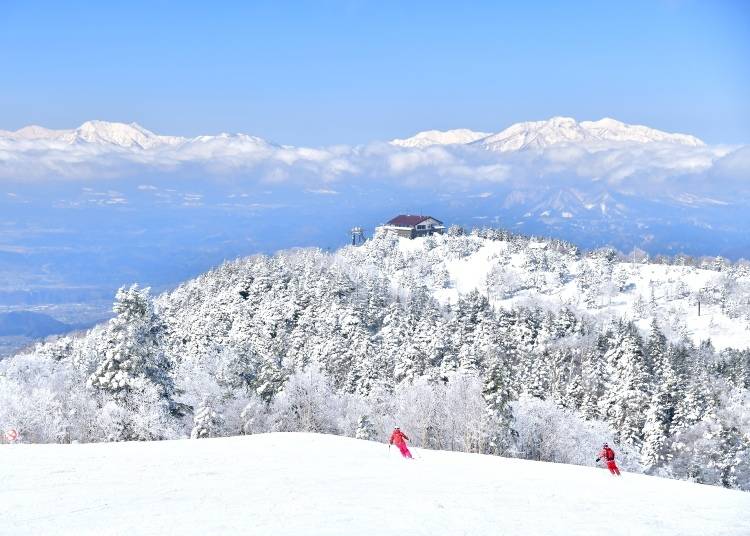
Niigata Prefecture is located northeast of Tokyo, just two hours by shinkansen, and sees some of the heaviest snowfall in all of Japan. It is also home to some of the tallest mountains in Japan, including Mt. Myoko and Mt. Naeba, which see some of the most sought-after powder snow in the country.
There are approximately 55 ski resorts, which all have fantastic access through public transport. Niigata is a great option for those who do not want to travel all the way up north to Tohoku or Hokkaido.
・Best time to ski in Niigata
The best time to visit Niigata for skiing or snowboarding is between mid to late December to February and late March.
Best ski areas in Niigata

Yuzawa
Yuzawa town is known for some of the best ski resorts in Niigata and is only a 70-90 minute Shinkansen ride from Tokyo. Due to its location in a mountainous area between the Sea of Japan and the surrounding Japanese Alps, it sees some of the highest snowfall in all of Japan. There is a wide range of ski resorts, on top of the impressive facilities and fantastic snow, which means it is a must-go for all winter sports lovers.
The GALA Yuzawa Snow Resort is the only ski area in Japan with its own Shinkansen station, to which the gondola lift is attached! It’s perfect for day trips and has become one of the most popular resorts in Yuzawa.
In the southern region of Yuzawa, there is Naeba Ski Resort, which initially opened in 1961. Now the modern-day Naeba boasts impressive facilities with 12 ski lifts, including three gondolas and four quad lifts. In recent times Naeba hosted many events, such as the FIS Alpen Ski World Cup (most recent in 2020) and national ski and snowboard competitions.
Minamiuonuma City
Minamiuonuma City is a small city located in the southern part of Niigata, home to Muikamachi Hakkaisan Ski and Snowboard Resort. The resort has amazing side country terrains and awesome tree skiing, making it the go-to place in Niigata for those that are more daring. As many people who visit Niigata go to Yuzawa, the slopes are often quieter, while still enjoying the powder snow. The base area has a few beginner runs and a baby terrain park; however, it is not the most family-friendly resort, as many of the courses are for intermediate and above.
Myoko
Myoko Kogen is a fantastic place for powder lovers as well as those that want to experience Japanese culture. Founded in the 1930s, it is not your typical modern-day ski resort town, with many locally run businesses and unadulterated onsens. An influx of foreign tourists has seen multilingual facilities implemented, but it has kept its authentic roots. Myoko Suginohara Ski Resort is a Prince resort that offers amazing long, cruise-like courses and also good side country options. There are no towering hotels at the base as it has kept its Japanese feel. There are a variety of ski slopes for all levels and abilities and is particularly great for families.
Other resorts in Myoko that we highly recommend are Akakura Onsen Ski Area, Akakura Kanko Ski Resort, and Ikenotaira Onsen Ski Resort. These are located on the eastern side of Mt. Myoko that see just as spectacular snowfall as Yuzawa.
4. Gifu

While Gifu may not be high on many people’s lists as the go-to place for winter sports, it actually has some of the most popular ski resorts for people living in Kansai and the western regions of Japan. It is only a couple hours’ drive from Nagoya, Osaka, and Kyoto, making it easy to access.
The snowfall levels might not be on par with areas such as Tohoku or Hokkaido, but it is still very respectable. Gifu is a fantastic option as the slopes are much quieter despite having excellent quality snow.
・Best time to ski in Gifu
There are only around 20 ski resorts, which are best visited between late December to February.
Best ski areas in Gifu

Gujo
Gujo is located in central Gifu and is home to some of the prefecture’s largest and most popular ski resorts. Dynaland Ski Resort is located on the east side of Mt. Dainichi and is the most popular ski resort. There are bus tours from Nagoya Station to Dynaland, which makes it an extremely convenient option for people living in Kansai and west Japan. It is popular amongst snowboarders and has good terrain parks and a half pipe. It is also connected to Takasu Snow Park, which can be accessed with a shared ticket. The ski resort also opens from 5 am on weekends and holidays for those early risers!
On the western side of Mt. Washigatake, you can also enjoy the popular Washigatake Ski and Snowboard Resort, and on the east side, there is also Meiho Ski Resort.
Takayama
Takayama is a city in the northern part of Gifu Prefecture. It retains a traditional Japanese feel, especially in the beautifully preserved old town quarter. You can enjoy many old-style Japanese architecture, foods, and traditions.
To the south and east of Takayama, there are a few ski resorts that are also available for winter sports lovers. One of which is Mont Deus Hida-Kuraiyama Snow Park, located on the northeastern slopes of Mt. Kurai. It’s a smaller, locally run ski resort, making it great for people that want to hit the slopes with fewer people around. The terrain is relatively limited, so it is suitable for a day or two. It also has an exclusive space for sledding - the perfect place for younger children to enjoy.
5. Yamagata

Yamagata Prefecture is popular with many across Japan because of its ease of access through the Yamagata Shinkansen. With plenty of snowfall and around 20 ski resorts, there is a slope for whatever level you are, whether it be intermediate or starting for the first time.
In recent times, the Zao Onsen area has become popular with tourists across the country and world for its stunning snow-covered trees, hot springs, and of course, the slopes. This has even seen an expansion in foreigner-friendly services and facilities!
・Best time to ski in Yamagata
The snow in Yamagata is at its best between late December and February, but you can still ski into March.
Best ski areas in Yamagata

Yamagata City
As the capital of Yamagata Prefecture, it has the largest population and no shortage of things to do, from fantastic cuisine, nightlife, and of course, great ski resorts. In the southwest area of Yamagata City, there is one of the most famous ski resorts, Zao Onsen. It is the name of the traditional onsen village as well as the ski resorts dating back to 1925.
The first ski lift was built in 1951 and now features multiple ropeway cable car lifts. In terms of the area of an individual ski resort, it is the largest in Japan and sees heavy snowfall throughout January and February. It is also famous for the juhyo (snow monster) formations on the trees in the upper areas of Mt. Zao during the peak winter season. The natural phenomenon is so special to Yamagata and is also another reason why people love coming to Zao Onsen.
Yonezawa
Yonezawa lies at the southern end of Yamagata Prefecture and is rich with history, particularly traditional cloth weaving, sake brewing, and beef. Tengendai Kogen is one of the most beautiful places to absorb yourself in genuine Japan whilst enjoying the slopes. The area has high snowfall, so you can enjoy the slopes from early December to mid-May. The resort offers spectacular views over the Yamagata mountains. At the base, there is the historic and traditional Japanese Shirabu Onsen Village to immerse yourself in after hitting the slopes. You can often see snow monkeys around the Shirabu Onsen in their natural habitat!
Other resorts include Yonezawa Snow World, Kuriko International Ski Resort, and Onogawa Onsen, which all have great services and slopes for beginners to experts!
6. Iwate
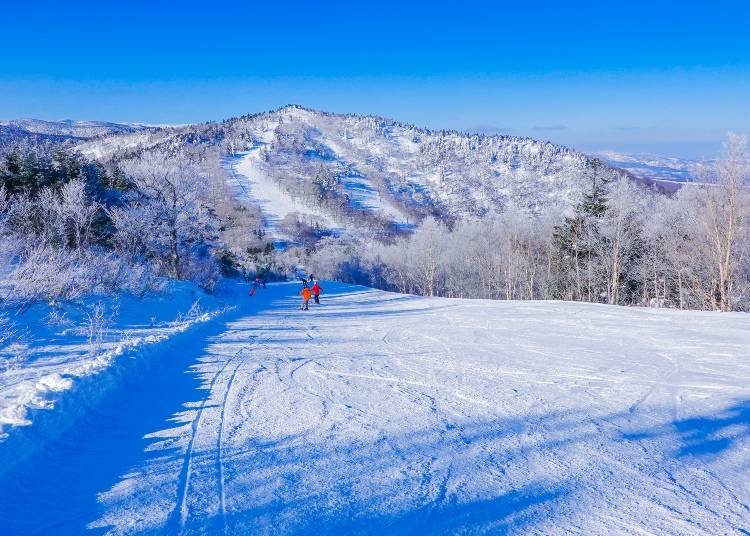
Iwate Prefecture is a fantastic option for those that want to escape the crazy busy, more well-known ski resorts.
However, this does come with some pros and cons. Firstly, as it is relatively quiet, much of the snow is untouched, so you have the chance to ski or board down some fresh snow. The accommodation is also much cheaper than other mainstream resorts. On the other hand, facilities are less equipped and have fewer multilingual services.
In addition, many of the ski resorts are small to medium-sized, so it might not be ideal for an extended stay. However, for those that like to experience something different than the mainstream, Iwate is a fantastic option! Not to mention it has fantastic onsens to warm up in!
・Best time to ski in Iwate
We recommend visiting between December and February for the best snow, but you can also ski into late March and even into April.
Best ski areas in Iwate

Mount Iwate
Mt. Iwate is the tallest mountain in Iwate Prefecture (2,038 m) and is also ranked as one of japan’s 100 Most Beautiful Mountains. There are several ski resorts around Mt. Iwate, making it a fantastic area to experience different courses. To the north is Hachimantai Resort's Panorama Ski Area, which we recommend for beginners as there are plenty of gentle slopes and are uncrowded. The area sees great powder snow and has a high-speed quad chair lift, so you can get plenty of runs in!
Another option is Iwate Kogen Snow Park on the southern side of Mt. Iwate. Here, there are a couple of beginner slopes but also great options for intermediate and expert skiers and snowboarders. It has a good range of trees, and the fall line is consistent and has steep pitches. Closely are the Amihari Onsen Ski Resort and Shizukuishi Ski Resort, which we also recommend!
Hachimantai
Hachimantai is a small city located on the northwest side of Iwate, right on the border with Akita Prefecture. The city is far removed from the major areas, so you can enjoy some of the rustic hot springs, beautiful volcanic landscapes, and the slopes of Mt. Hachimantai.
There are several ski resorts around the east side of the mountain, one of which is Hachimantai Resort Shimokura Area. Here, the snow quality is excellent, with light and powdery snow, making it ideal for all skiers and snowboarders. The resort is also quite unknown to foreigners, so there is less competition for the powder.
The resort is also connected to the Hachimantai Resort Panorama Ski Area by a 10-minute shuttle bus, and both can be enjoyed using a common lift ticket. After a day on the slopes, the area also has fantastic onsen options to relax and refresh yourself for your next day! Whilst it is hard to access (a car will most definitely be necessary), Hachimantai is one of our top recommendations in Iwate!
Kitakami
Kitakami is located in central Iwate and has a unique cultural heritage. The city has a long tradition of performing arts, so you can enjoy many different festivals and dances throughout the year. Not to mention that there is also one of Tohoku’s most popular ski resorts, Geto Kogen Resort. It has 14 courses with state-of-the-art ski lifts and gondolas.
There is a plentiful mix of beginner, intermediate and advanced courses, as well as fantastic off-piste areas for the powder hounds out there. For such a well-developed resort, it is also relatively quiet, so you can enjoy a lot of the powder snow to yourself. Saying this, the terrain is rather small, so a one or two-day trip is more than enough. The area is a powder magnet with around 15 meters of snow falling each season!
Other popular ski resorts around Japan

Our recommended area above is primarily in northern Japan. However, there are still plenty of ski resorts in the west and south of Japan! These are just a few of our top picks.
Tochigi - Hunter Mountain Shiobara
Hunter Mountain Shiobara is a ski area located on the northwest side of Mt. Takahara. Hunter Mountain has a six-person 2,418 m gondola, two quad lifts and three-pair lifts.
It is best suited for intermediate skiers and snowboarders, but there are also plenty of areas for beginners and advanced. Just being a little over two hours away from Tokyo, it is one of the best resorts in the region!
It is also equipped with a snow park with a rail, box, kicker, and half pipe, the popular Pole Bahn slope and a Family Park, which is perfect for the kids!
Shiga - Hakodateyama Ski Resort
The cities of Kansai rarely get a lot of snowfall, so to find a ski resort, you’ll have to go high up into the mountains. Many ski resorts often use artificial snow; however, at Hakodateyama Ski Resort, you can enjoy beautiful natural snow.
The resort has varied courses from beginner to advanced, and the use of snow machines means that the resort opens as early as December! From the slopes, you can enjoy picturesque views over Lake Biwa!
Recommended snow activities in Shiga
Andy is a chef and culinary journalist with over 7 years in Japan, extensively exploring its regional dishes. A University of Nottingham graduate, he trained in five Japanese restaurants before transitioning to freelance work. He contributes to over 10 global clients, including Marriot Bonvoy and the Hokkaido Tourism Board, and assists in translation and promoting inbound tourism with local governments.
- Category
*Prices and options mentioned are subject to change.
*Unless stated otherwise, all prices include tax.
Popular Tours & Activitiess
Recommended places for you
-

Kambei Sannomiyahonten
Yakiniku
Kobe, Sannomiya, Kitano
-
Goods

Yoshida Gennojo-Roho Kyoto Buddhist Altars
Gift Shops
Nijo Castle, Kyoto Imperial Palace
-

Kanzenkoshitsuyakinikutabehodai Gyugyu Paradise Sannomiya
Yakiniku
Kobe, Sannomiya, Kitano
-
Appealing

Rukku and Uohei
Izakaya
Sapporo / Chitose
-

ISHIDAYA Hanare
Yakiniku
Kobe, Sannomiya, Kitano
-

Jukuseiniku-to Namamottsuarera Nikubaru Italian Nikutaria Sannomiya
Izakaya
Kobe, Sannomiya, Kitano
-

How to Get Don Quijote's Exclusive 2025-2026 Winter Gift (+Tax-Free Savings)
-

First Japan Cherry Blossom 2026 Forecast Announced! Here's When & Where to See Sakura in Japan
-
Ad

(Opening in Jan 2026) 'THE SUMO LIVE RESTAURANT HIRAKUZA GINZA TOKYO!' 5 Exciting Ways to Experience the World of Sumo!
-
Ad

Complete Guide to Ueno's National Museum of Nature and Science, the Perfect Place to Visit on Rainy Days or With Children
-
Ad

Preserving the Beauty of World Heritage Site Shirakawa-go for the Future Through Responsible Travel
-

Japan’s Shinkansen Is About to Change Travel in an Unexpected Way
by: Guest Contributor
-

Up to 66% Off! Buy Your 2024-25 Japan Ski Resort Lift Tickets in Advance & Save
-

5 Reasons You'll Love the Luxuries of Rusutsu Resort – Japan's Best Ski Area!
-

Japan Ski Packing List: Planning Tips & Tricks for Your First Ski Trip to Japan
-

9 Ski Resorts Near Osaka That'll Have You Booking Your Winter Getaway (2024-25 Season)
by: WESTPLAN
-

Koiwai Farm Guide: Explore, Dine, and Play at Iwate's Top Agritourism Spot
-

Takahan Ryokan: Enjoy Spectacular Hot Spring Views at Yuzawa's Premier Traditional Inn!
- #best sushi japan
- #what to do in odaiba
- #what to bring to japan
- #new years in tokyo
- #best ramen japan
- #what to buy in ameyoko
- #japanese nail trends
- #things to do japan
- #onsen tattoo friendly tokyo
- #daiso
- #best coffee japan
- #best japanese soft drinks
- #best yakiniku japan
- #japanese fashion culture
- #japanese convenience store snacks





















![[Hokkaido] Kiroro Resort Snow World Ticket in Hokkaido with Ski Wear & Equipment Rental Options](https://rimage.gnst.jp/livejapan.com/public/article/detail/a/00/01/a0001787/img/en/a0001787_parts_63d1f39eb81dc.jpg?20230126103600&q=80&rw=280&rh=280)
![[Hokkaido] Ski / Snowboard・Wear Rental Equipment in Niseko, Hokkaido](https://rimage.gnst.jp/livejapan.com/public/article/detail/a/00/01/a0001787/img/en/a0001787_parts_63d1f3c62665d.jpg?20230126103600&q=80&rw=280&rh=280)
![[Hokkaido] Private Vip Plus Ski or Snowboard Lesson in Niseko/Rusutsu/Kiroro](https://rimage.gnst.jp/livejapan.com/public/article/detail/a/00/01/a0001787/img/en/a0001787_parts_63d1f3e058bbc.jpg?20230126103600&q=80&rw=280&rh=280)
![[Hokkaido] Sapporo Snowmobile Land Experience in Hokkaido](https://rimage.gnst.jp/livejapan.com/public/article/detail/a/00/01/a0001787/img/en/a0001787_parts_63d1f3f5e543f.jpg?20230126103600&q=80&rw=280&rh=280)






![[Nagano] Hakuba Goryu Snow Resort Chair Lift and Ski Experience in Nagano](https://rimage.gnst.jp/livejapan.com/public/article/detail/a/00/01/a0001787/img/en/a0001787_parts_63d1f47a1aa29.jpg?20230126103600&q=80&rw=280&rh=280)
![[Nagano] Ski & Snowboard Package Rental in Hakuba](https://rimage.gnst.jp/livejapan.com/public/article/detail/a/00/01/a0001787/img/en/a0001787_parts_63d1f4878968a.jpg?20230126103600&q=80&rw=280&rh=280)
![[Nagano] Nagano Snow Monkey Park and Zenko-ji Temple Day Tour with Sake Tasting](https://rimage.gnst.jp/livejapan.com/public/article/detail/a/00/01/a0001787/img/en/a0001787_parts_63d1f4a5deb7f.jpg?20230126103600&q=80&rw=280&rh=280)




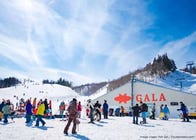

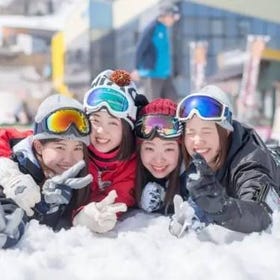








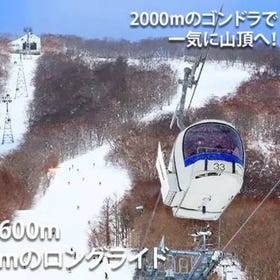





![[Shiga] Biwako Valley Ski Resort Day Tour from Osaka](https://rimage.gnst.jp/livejapan.com/public/article/detail/a/00/01/a0001787/img/en/a0001787_parts_63d1f50f377cd.jpg?20230126103600&q=80&rw=280&rh=280)


